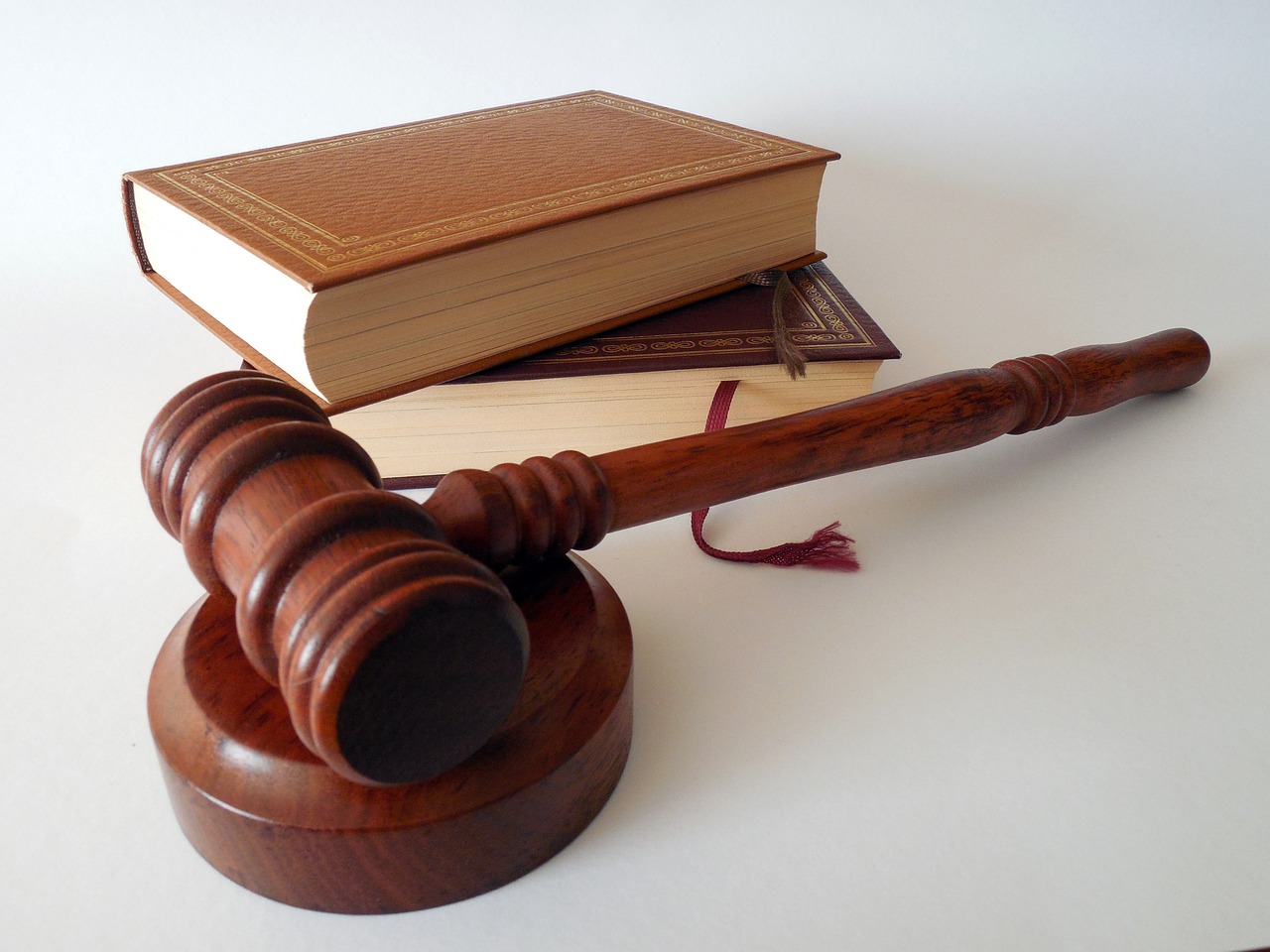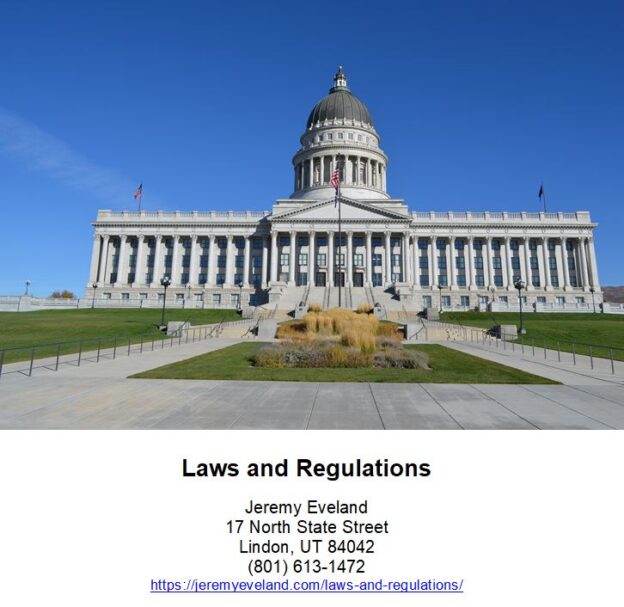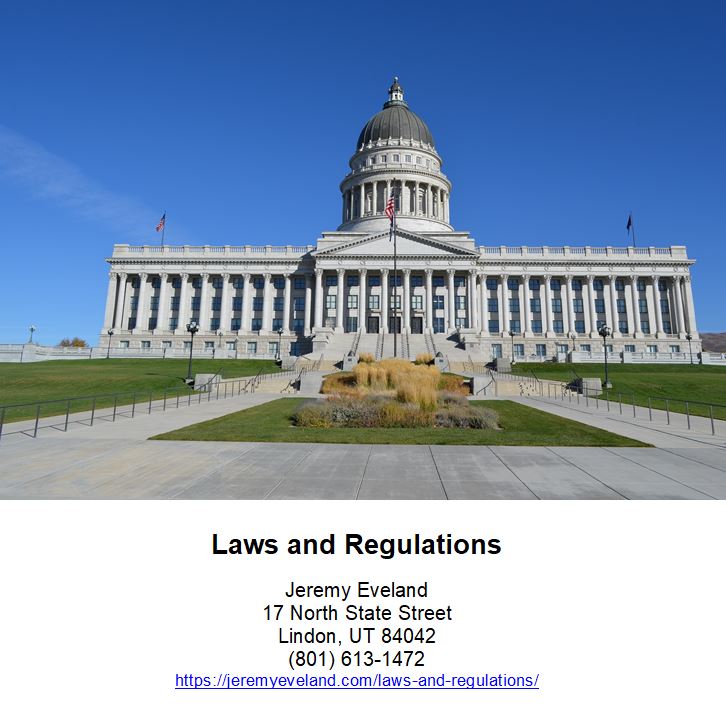If you are planning to build or renovate a structure in the state of Utah, it is crucial to have a comprehensive understanding of the building codes and safety regulations that govern construction projects. These regulations are in place to ensure that buildings are constructed in a safe and efficient manner, protecting both the occupants and the surrounding environment. By familiarizing yourself with the specific requirements and standards set forth by Utah’s building codes, you can ensure that your project complies with all necessary guidelines, avoiding potential legal issues and costly penalties. In this article, we will delve into the key aspects of Utah’s building codes and safety regulations, providing you with the knowledge you need to navigate the construction process successfully and confidently.
Overview of Building Codes and Safety Regulations in Utah
Utah’s building codes and safety regulations play a vital role in ensuring the construction of safe and structurally sound buildings. These regulations are in place to protect the well-being of occupants and to maintain the integrity of the built environment. This comprehensive article will provide an in-depth understanding of Utah’s building codes, their historical evolution, and their enforcement processes. It will also shed light on the benefits of compliance, misconceptions surrounding building codes, and the importance of seeking legal counsel when navigating these regulations.
History of Building Codes in Utah
Utah’s history of building codes dates back to the early 1900s when the state recognized the need for standardized regulations. The first building codes in Utah were introduced to address concerns related to fire safety and structural integrity. Over time, these codes have evolved and expanded to encompass a wide range of building aspects, including electrical safety, plumbing, accessibility, and energy efficiency.

Importance of Building Codes and Safety Regulations
Building codes and safety regulations are of paramount importance as they serve as a benchmark for ensuring that structures meet minimum safety standards. By adhering to these codes, homeowners, contractors, and business owners can help prevent potential hazards and mitigate risks. Compliance with building codes also ensures that buildings are designed and constructed to withstand natural disasters, fire outbreaks, and other emergencies, thereby protecting lives and property.
Organizations Responsible for Enforcing Building Codes in Utah
In Utah, the responsibility of enforcing building codes and safety regulations lies with various organizations. The Division of Occupational and Professional Licensing (DOPL) within the Utah Department of Commerce oversees the licensing and regulation of contractors, electricians, plumbers, and other construction-related professions. Local building departments and offices, typically found within city or county governments, are responsible for administering and enforcing building codes at a local level. These departments conduct plan reviews, issue permits, and perform inspections to ensure compliance with the applicable codes and regulations.
Residential Building Codes in Utah
Residential buildings in Utah are subject to several building codes and safety regulations to ensure the safety, durability, and livability of these structures.
Minimum Room Size Requirements
Utah’s residential building codes outline minimum room size requirements to ensure habitable living spaces. These codes take into consideration the functionality and safety of the occupants. For example, bedrooms must meet specific size requirements to allow for proper ventilation and escape routes in case of emergencies.
Electrical Safety Codes
Electrical safety codes in Utah ensure that residential wiring systems are installed correctly and meet the required safety standards. These codes govern the design, installation, and maintenance of electrical systems, including wiring, outlets, and lighting fixtures. Compliance with these codes helps prevent electrical shocks, fires, and other electrical hazards.
Plumbing Codes
Plumbing codes in Utah regulate the installation, maintenance, and repair of plumbing systems in residential buildings. These codes cover a wide range of aspects, such as sanitary drainage, water distribution, and fixture installations. By adhering to these codes, homeowners can ensure the proper functioning of plumbing systems, prevent water leaks, and maintain sanitary conditions.
Fire Safety Regulations
Fire safety regulations are integral to residential building codes in Utah to protect occupants from fire hazards. These regulations include requirements for fire alarms, fire extinguishers, emergency exits, and fire-resistant construction materials. Compliance with fire safety regulations significantly reduces the risk of fire-related injuries and property damage.
Commercial Building Codes in Utah
Commercial buildings in Utah are subject to a distinct set of building codes and safety regulations. These codes focus on creating safe and accessible environments for employees, customers, and visitors.
Accessibility Requirements
Utah’s commercial building codes incorporate accessibility standards to ensure that buildings are designed to accommodate individuals with disabilities. These requirements encompass elements such as ramps, doorways, elevators, and restroom facilities, making commercial buildings accessible to everyone. Compliance with these codes not only promotes inclusivity but also helps businesses avoid potential legal issues related to accessibility.
Structural Integrity Standards
Structural integrity standards are crucial in commercial building codes to ensure that buildings can withstand environmental forces and maintain their stability throughout their lifespan. These codes address design requirements, construction materials, and load-bearing capacities to prevent structural failures and ensure the safety of occupants.
HVAC and Mechanical Systems
Commercial building codes in Utah also include regulations concerning heating, ventilation, air conditioning (HVAC), and mechanical systems. These codes aim to facilitate proper air circulation, temperature control, and ventilation within buildings, promoting indoor air quality and occupant comfort.
Energy Efficiency Regulations
Energy efficiency is a key concern addressed in commercial building codes. These regulations promote sustainable practices and require the utilization of energy-efficient materials and systems. Compliance with energy efficiency requirements not only helps reduce environmental impact but also leads to long-term cost savings for businesses through reduced energy consumption.

Permitting and Inspection Process in Utah
Utah’s permitting and inspection process is an essential part of ensuring that buildings are constructed and maintained in accordance with building codes and safety regulations.
Applying for Building Permits
Before starting construction, obtaining a building permit is a necessary step in Utah. The permit application must include detailed plans and specifications of the proposed construction project. Building permit fees vary based on the scope and complexity of the project.
Review and Approval Process
Once the building permit application is submitted, it undergoes a thorough review process by the local building department. This review ensures that the proposed project meets the requirements outlined in the building codes and safety regulations. If the plans meet the necessary criteria, the building permit is approved, and construction can begin.
Construction Inspections
Throughout the construction process, inspections are conducted by authorized personnel to verify compliance with building codes. These inspections may include foundation inspections, framing inspections, plumbing and electrical inspections, and final inspections. Inspections help identify any deviations from the approved plans and ensure that construction proceeds in a safe and compliant manner.
Certificates of Occupancy
Upon completion of the construction project and the final inspection, a Certificate of Occupancy is issued by the local building department. This certificate confirms that the building meets all applicable codes and regulations and is safe for occupancy. It is crucial to obtain a Certificate of Occupancy before using or occupying the building.
Enforcement of Building Codes and Safety Regulations in Utah
Utah’s building codes and safety regulations are enforced through a combination of interventions, penalties, and appeals processes to ensure compliance.
Interventions and Penalties for Non-Compliance
When instances of non-compliance are identified, various interventions are implemented to rectify the situation. These interventions may include cease and desist orders, fines, and possible legal actions. The severity of penalties depends on the nature and extent of the violation, with repeat or serious offenses attracting more severe consequences.
Building Code Violation Appeals
Utah provides an appeals process for individuals or businesses who wish to challenge a building code violation. This process allows for a fair and impartial review of the situation by an administrative authority. It is essential to understand the specific procedures and requirements for filing an appeal to present a strong case.
Building Code Compliance Resources
Utah offers resources and guidance to support building code compliance. The local building departments provide educational materials, workshops, and assistance to help individuals and businesses understand and comply with the regulations. Utilizing these resources can greatly facilitate the compliance process and ensure a smooth building project.

Updates and Changes in Utah’s Building Codes
Utah’s building codes are subject to periodic updates and changes to incorporate advancements in construction practices, technology, and safety standards.
Adoption of International Building Code
In Utah, building codes are primarily based on the International Building Code (IBC). The IBC is regularly updated at the national level, and Utah adopts new editions of the IBC to ensure the incorporation of the latest best practices and advancements.
Recent Amendments and Revisions
Utah’s building codes undergo regular revisions to address emerging concerns and reflect changes in the industry. Recent amendments may include updates related to energy efficiency, sustainable construction practices, and technological advancements in building systems.
Anticipated Future Changes
Utah’s building codes are expected to continue evolving to keep pace with the ever-changing construction landscape. Future changes may include enhancements in building resilience to natural disasters, increased focus on renewable energy integration, and stricter energy efficiency requirements to promote sustainability.
Common Misconceptions and Myth Busting
Building codes sometimes face misconceptions, and it is essential to debunk these myths to foster a better understanding of their purpose and benefits.
Building Codes Restrict Creativity and Design
Contrary to popular belief, building codes do not stifle creativity or limit design options. Building codes establish minimum safety requirements while allowing for flexibility in design choices. Compliance with these codes ensures that creative designs are implemented in a safe and structurally sound manner.
Building Codes Are One-Size-Fits-All
Building codes are not identical across all cities in Utah. While there are statewide regulations, local building departments can adopt additional requirements tailored to the specific needs and conditions of their respective communities. It is crucial to understand the specific codes and regulations applicable to the location and project at hand.
Compliance Is Too Expensive
While it is true that building code compliance may entail additional costs, these expenses are a small price to pay compared to the potential legal, financial, and safety consequences of non-compliance. Investing in compliance from the start ensures long-term durability, safety, and cost-effectiveness.
Only New Construction Requires Permits
Building permits are not only required for new construction but also for various remodeling and renovation projects. Activities such as structural alterations, electrical updates, plumbing changes, and additions may necessitate a permit. It is vital to consult with the local building department to determine whether a permit is required for a specific project.
Quality and Safety Benefits of Utah’s Building Codes
Utah’s building codes offer numerous benefits in terms of quality, safety, and sustainability. Compliance with these codes leads to the following advantages:
Reduced Risks of Structural Failures
By adhering to building codes, the risk of structural failures is significantly reduced. Codes govern aspects such as structural design, material specifications, and construction techniques, ensuring the stability and durability of buildings.
Improved Fire Safety Measures
Utah’s building codes incorporate stringent fire safety regulations, resulting in improved fire prevention, detection, and containment measures in both residential and commercial buildings. Compliance with these codes helps protect lives and property in the event of a fire.
Enhanced Energy Efficiency
Utah’s building codes prioritize energy efficiency, aiming to reduce energy consumption and environmental impact. Compliance with energy efficiency requirements leads to lower utility bills, reduced carbon emissions, and long-term cost savings.
Accessible and Inclusive Infrastructure
Incorporating accessibility requirements into building codes ensures that Utah’s buildings are inclusive and universally accessible. Compliance with these codes enables individuals with disabilities to navigate buildings and facilities independently, fostering inclusivity and equal access for all.
Hiring a Business Lawyer for Building Code Compliance
Navigating the complexities of building codes and safety regulations in Utah can be overwhelming. Hiring a business lawyer with expertise in construction law can provide valuable legal counsel and guidance throughout the compliance process.
Importance of Legal Counsel
A business lawyer experienced in construction law possesses the knowledge and expertise to navigate the legal aspects of building code compliance. They can provide guidance on interpreting building codes, reviewing contracts, and ensuring compliance throughout the construction process.
Assistance with Permitting and Licensing
Obtaining permits and licenses is a critical aspect of building code compliance. A business lawyer can assist in preparing the necessary documentation, submitting permit applications, and ensuring compliance with licensing requirements, saving time and minimizing potential delays.
Representation in Building Code Disputes
In the event of a building code violation or dispute, a business lawyer can provide necessary legal representation. They can advocate on behalf of clients, negotiate settlements, or represent them in appeals processes, ensuring their rights and interests are protected.
Contract Review and Negotiation
Construction contracts play a crucial role in defining the rights and responsibilities of parties involved in a construction project. A business lawyer can review and negotiate contracts, ensuring that they comply with applicable building codes and safety regulations and protect the client’s legal and financial interests.
FAQs about Building Codes and Safety Regulations in Utah
Are building codes the same across all cities in Utah?
No, building codes can vary across different cities in Utah. While the state adopts the International Building Code (IBC) as the basis for its building regulations, local building departments can incorporate additional requirements specific to their communities. It is essential to consult with the local building department to determine the applicable building codes for a particular project.
How often are the building codes updated in Utah?
Building codes in Utah are regularly updated as new editions of the International Building Code (IBC) are released. The frequency of updates depends on advancements in construction practices, technology, and safety standards. It is crucial for professionals in the construction industry to stay informed about the latest code revisions to ensure compliance.
What permits are required for a residential remodel in Utah?
The permits required for a residential remodel in Utah can vary depending on the scope and nature of the project. Common permits may include building permits, electrical permits, plumbing permits, and mechanical permits. It is best to consult with the local building department to determine the specific permits required for a residential remodel.
What types of buildings require ADA compliance?
The Americans with Disabilities Act (ADA) requires accessibility compliance for certain types of buildings that are open to the public or serve as places of employment. This includes commercial buildings such as stores, offices, restaurants, hotels, and educational institutions. Additionally, public facilities, recreational areas, and common areas in residential buildings are also subject to ADA accessibility requirements.
Can I appeal a building code violation in Utah?
Yes, individuals or businesses have the right to appeal a building code violation in Utah. The appeals process involves submitting a formal request for review to the appropriate administrative authority. It is essential to understand the specific procedures, timelines, and requirements for filing an appeal to ensure a successful outcome.







